When I taught third grade, my students whined and complained when I asked them to write. They struggled to write when directed and when working independently. They lacked experience in sentence formation and frequently struggled with spelling. It pained me to watch them get frustrated, and it pained to me edit their work and ask them to write it over yet again. I was determined to make my students enjoy writing, and to produce quality writing in the process.
We are daily writers in Kindergarten. I strongly believe that if you encourage writing from the get go, students will naturally write. No stress, no frustration, no tears. I intentionally integrate writing all day long. This has developed a love for writing in my kindergarteners.
(DISCLAIMER – The first month or so of kindergarten is rough. I get that. Believe me, our first unprompted writing sample was no fun. I had criers and quitters. However, I teach writing in a teacher directed format during the first month or so, and then move toward independence. I differentiate in my classroom and within activities every day. The activities below are just samples. They are not necessarily completed by my entire class.)
Each morning, we begin with our morning journal. The kids come in, unpack, and grab their journal. We keep the lights low all morning so that we can “focus like scholars”. It is nothing fancy…just the date and a short sentence written on a hanging white board. The sentence is connected to our thematic unit. It usually contains one blank space for students to add their own word or phrase. As the year progresses, the journal becomes more open ended.
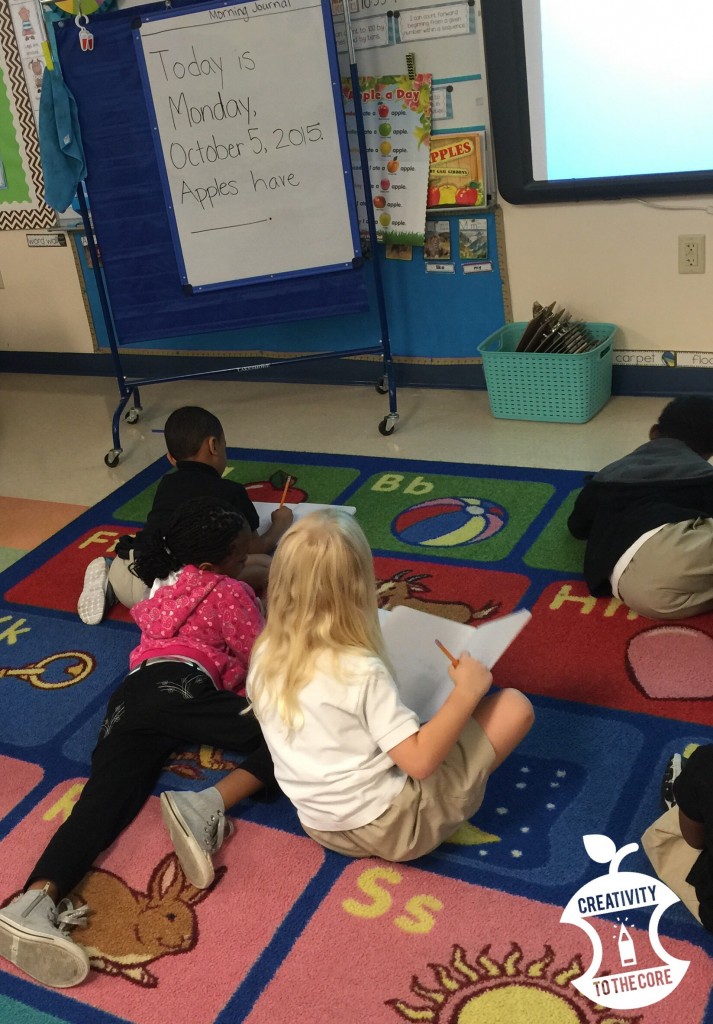
Students are expected to use capital letters, commas, and periods to form complete sentences. I give a quick check and send them on their way to create an illustration. We focus on matching the illustration to the words. This friend drew a picture of bats in a cave with man-made bat screening and a “NO” sign. I was so impressed that he remembered these details from a book about protecting bats!
During literacy centers, the writing center is where most formal writing takes place. (However, students are also writing in the word work and fluency centers, as well as in small group.) I absolutely LOVE Sharing Kindergarten’s “Write Me Three” packs. I use the mini word walls she includes, cut them, and hang them on twine. We use her organizers to help us form complete sentences.
This center layout is the same each week, which I love! Students rotate through this center twice every 6-or-so school days. When all students are finished, I simply change out the graphic organizer and the word cards.
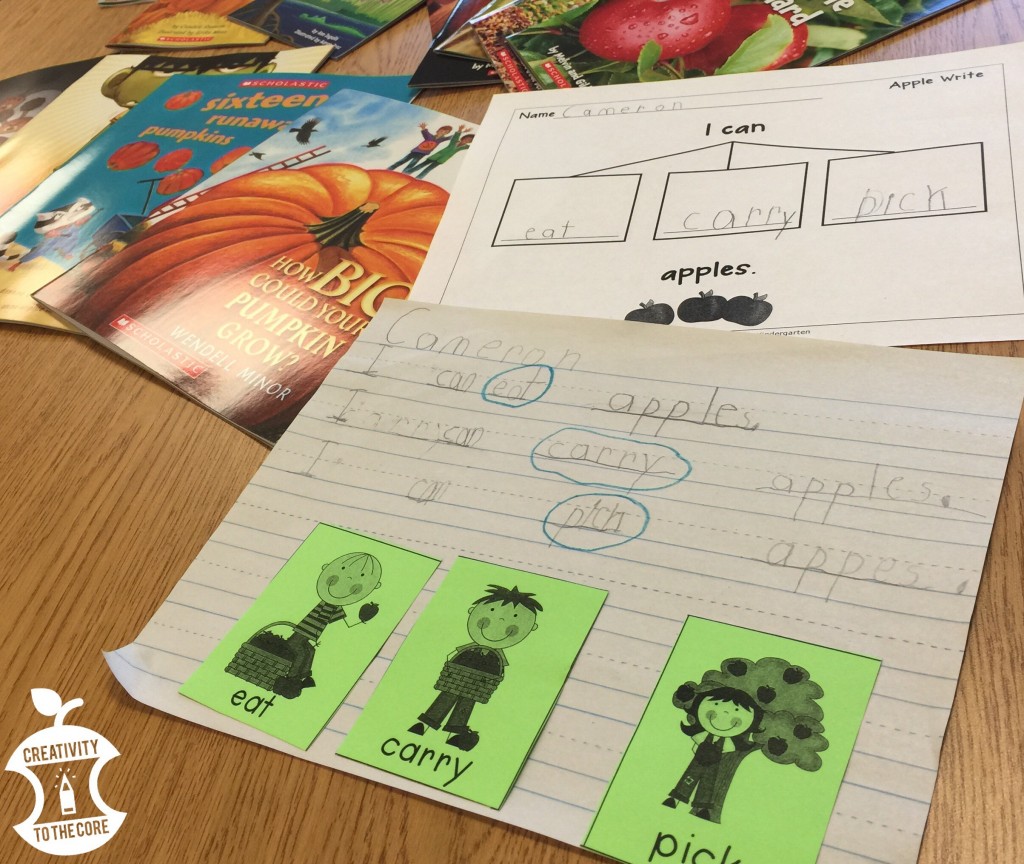
I also use the graphic organizers occasionally in small group to reinforce sentence formation in a more directed format. The “Write Me Three” format has given my students a fantastic foundation. They are able to write simple sentences and are now working to extend them further. After creating a directed drawing of a bat, this friend introduced her writing, gave the reader four sentences about bats, and then closed out her writing.
A handful of my kindergarteners are great readers. They are able to write independently, and are beginning to use spelling patterns we have learned on their own. During small group time, we focus on reading comprehension and writing. Once a week, we complete a passage like the one you see below. The reading focuses on one specific short vowel sound. We discuss reading with fluency and expression. We look for picture clues. Then, students work to answer each question independently, as I float around as needed. Who, what, when, where, and why questions are included with every passage in this set. We work on underlining evidence in the text and writing in complete sentences. Recently, we even began labeling our underlined evidence with each corresponding question’s number (Look really closely at the first sentence. You will see the student labeled it with as evidence for question #1).
At the end of the day, we have about 30 minutes to solely focus on writing. Some weeks we are consistently writing in our “colorful journals” during this time. You can find these journals (named by my kids for the bright covers) here at Lakeshore. We write our weekly skill words and underline similar patterns. We make sentences with sight words. We write math sentences and solve them. We learn how to slow down and think through sounding out unknown words. And sometimes, we simply free write as you can see below. “School is so fun because I get to go to small group. I like writing in my books. I like to learn. I like to see Mrs. Nardone.”
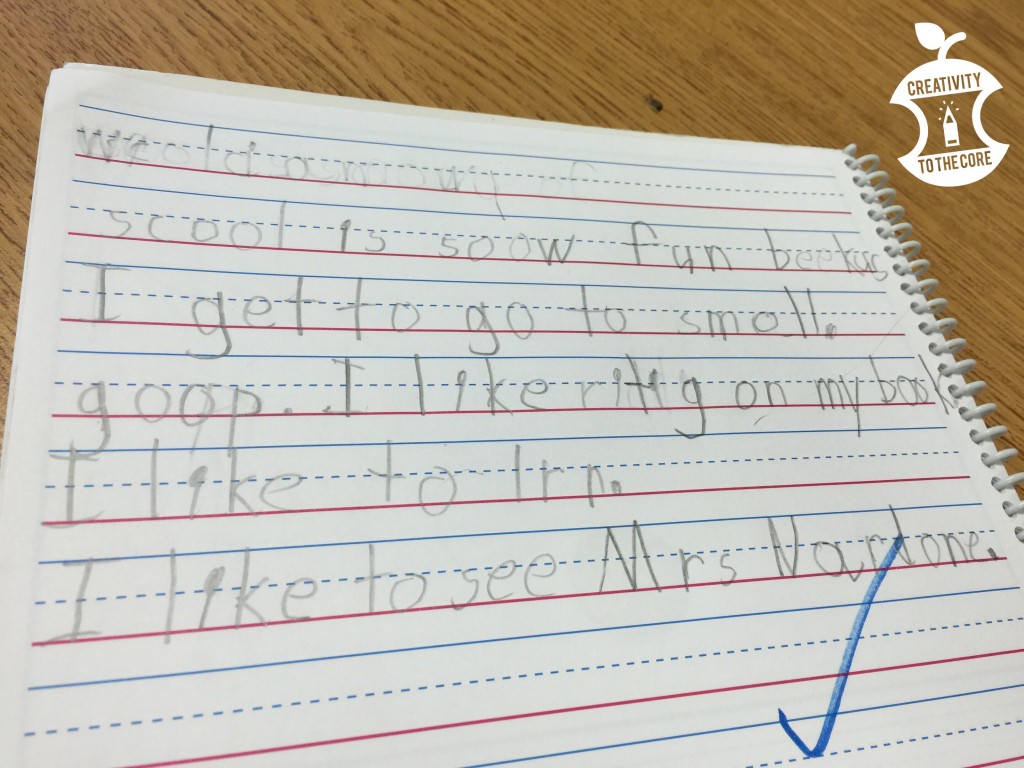
Some afternoons, I let the kiddos take the lead and we Write the Room. Everyone grabs a clipboard and they go anywhere and everywhere they want to. The only instruction: “Write as many words as you can find around the room! Go!” This is a HUGE hit.
During certain thematic units, I incorporate separate journals. We planted pumpkin seeds at the end of October, and then wrote about what we saw each day as the seeds grew. (Click the picture below for a link to this unit.) After 5 days, students brought these plants and journals home. They were encouraged to continue keeping track of their plants each day.
We sometimes also use this time in the afternoon to dig deep into our specific weekly standards. Here we had read the book The Little Old Lady Who Wasn’t Afraid of Anything. We retold the story many times before this, so this was a review. We wrote a little in each space to retell the story together. After writing, students drew an illustration to match the writing. This activity was as simple as folding paper, but it was new and exciting to my kindergarteners. They were thrilled to share it with their parents!
Writing has been a huge success in our classroom this school year! Students have moved from not being able to form letters to writing sentences. We have gone through more erasers than I can count. We have lost quite a few pencils. But we have worked really hard. We have tried our very best. We are becoming super writing scholars…and that is all this teacher can ask for!

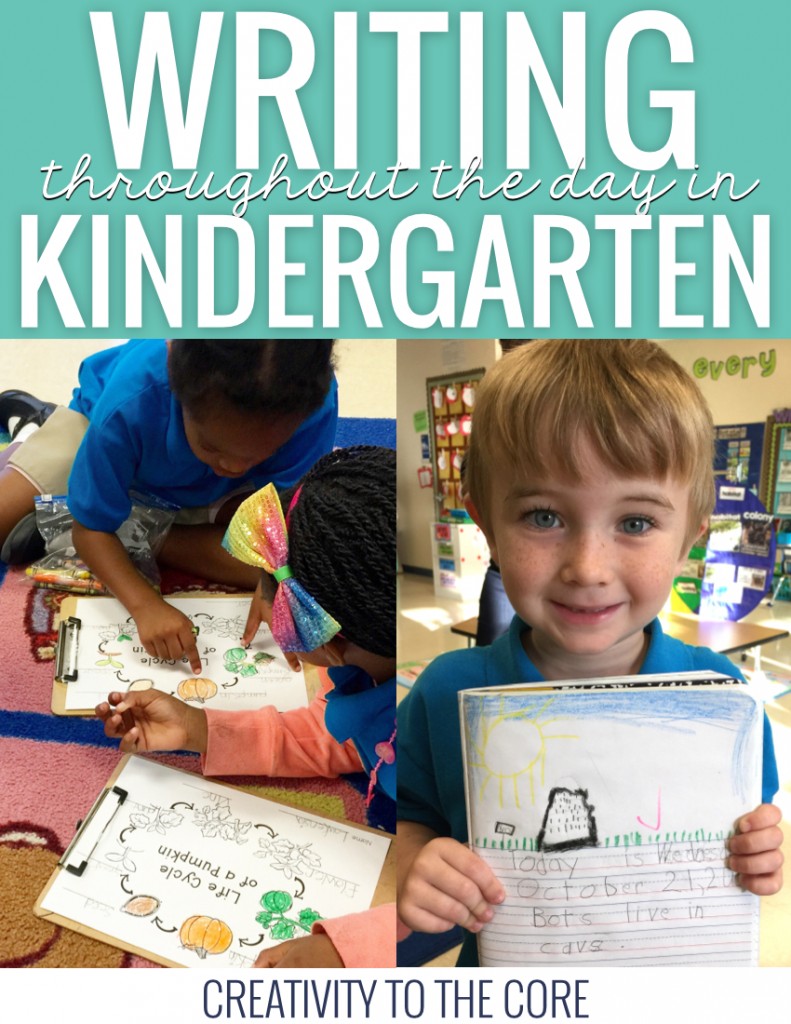
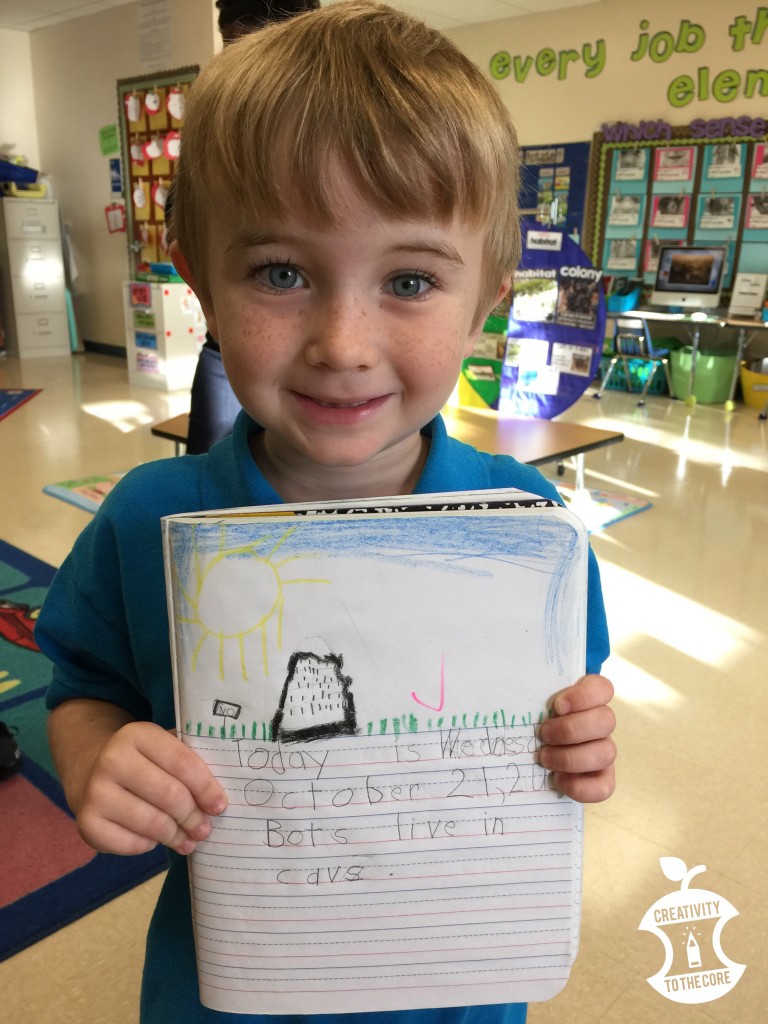
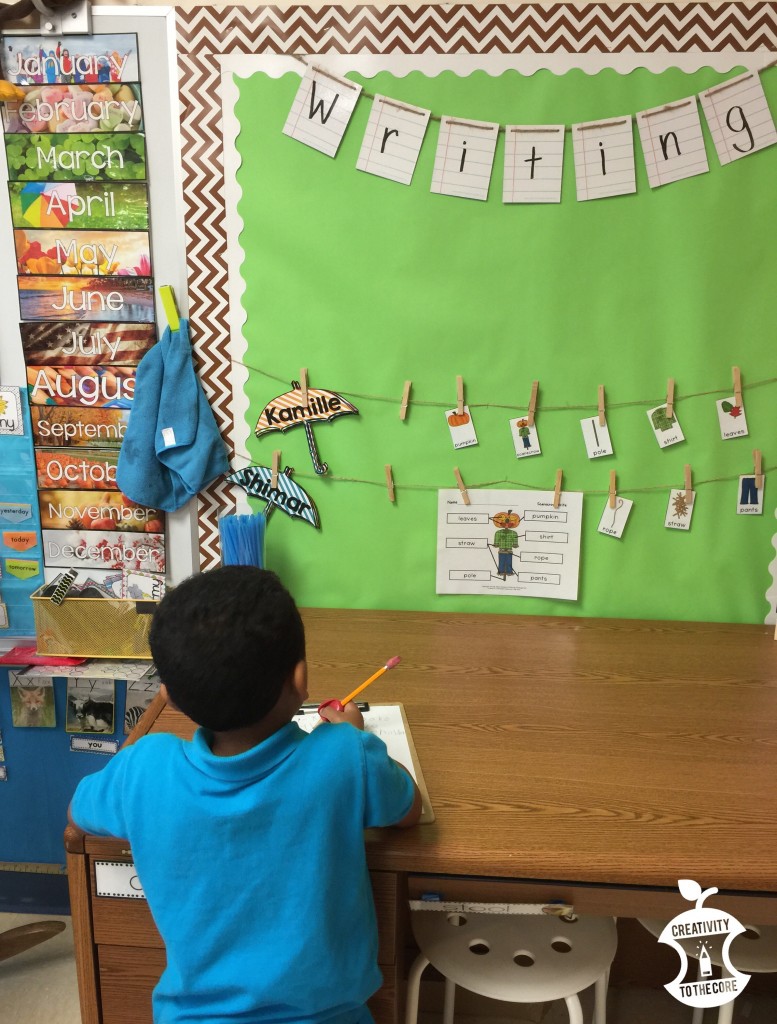
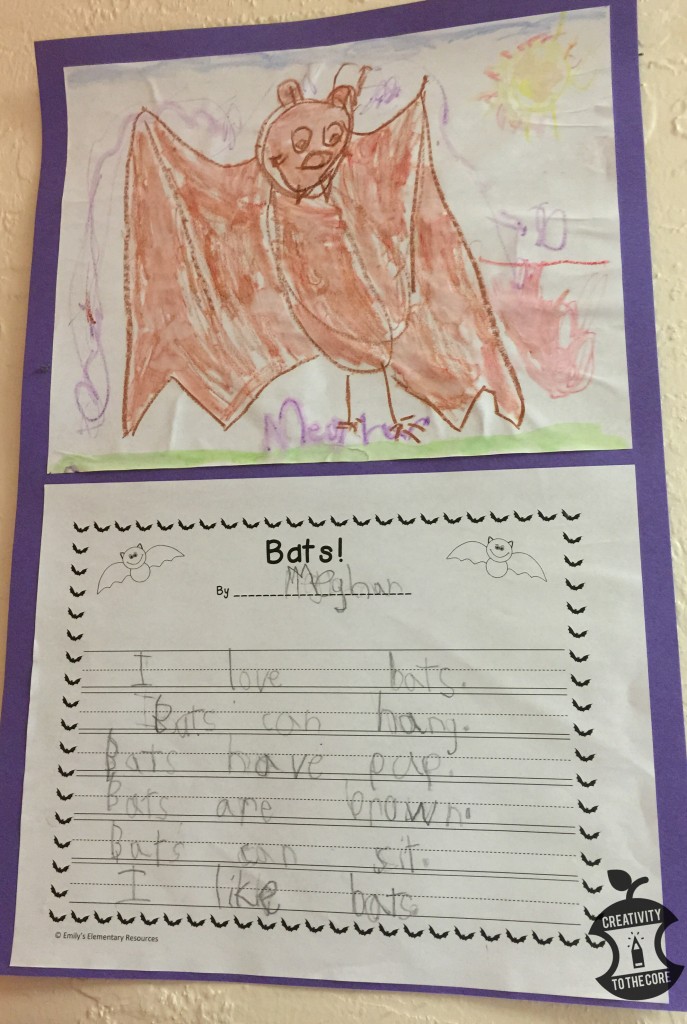
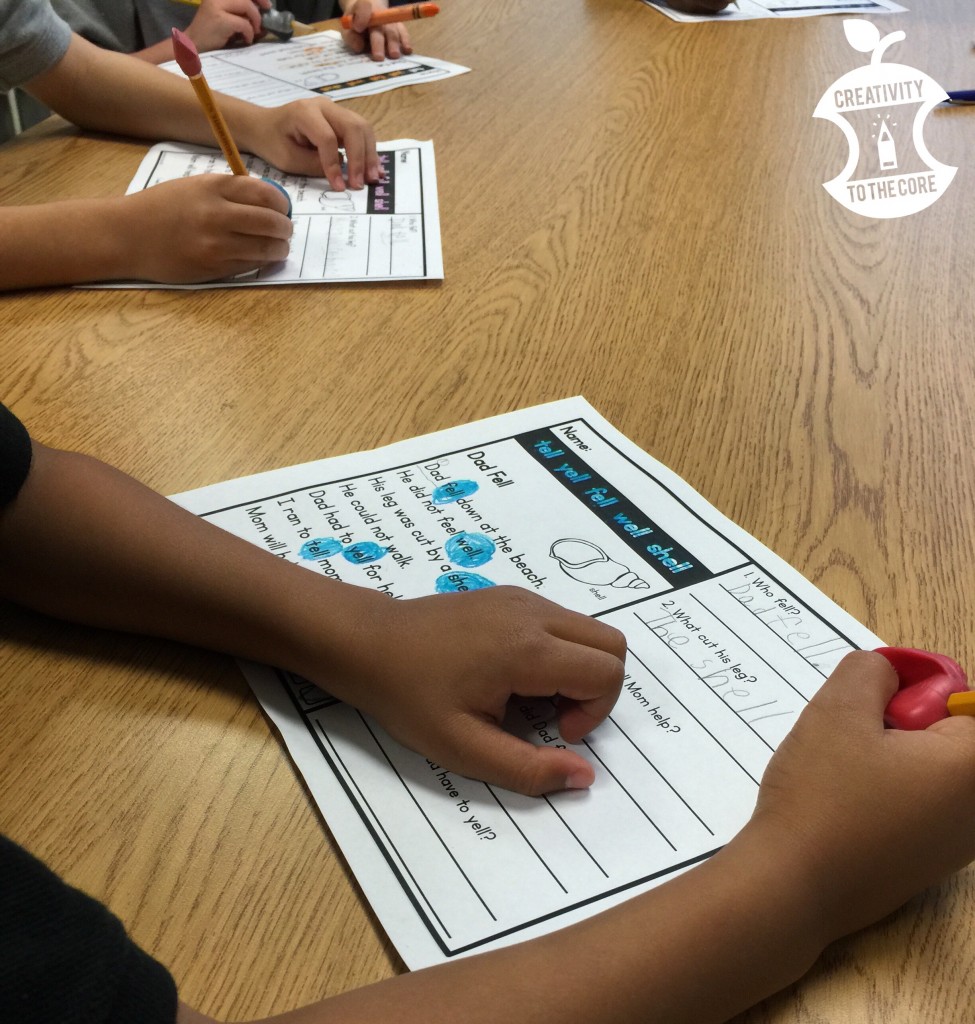
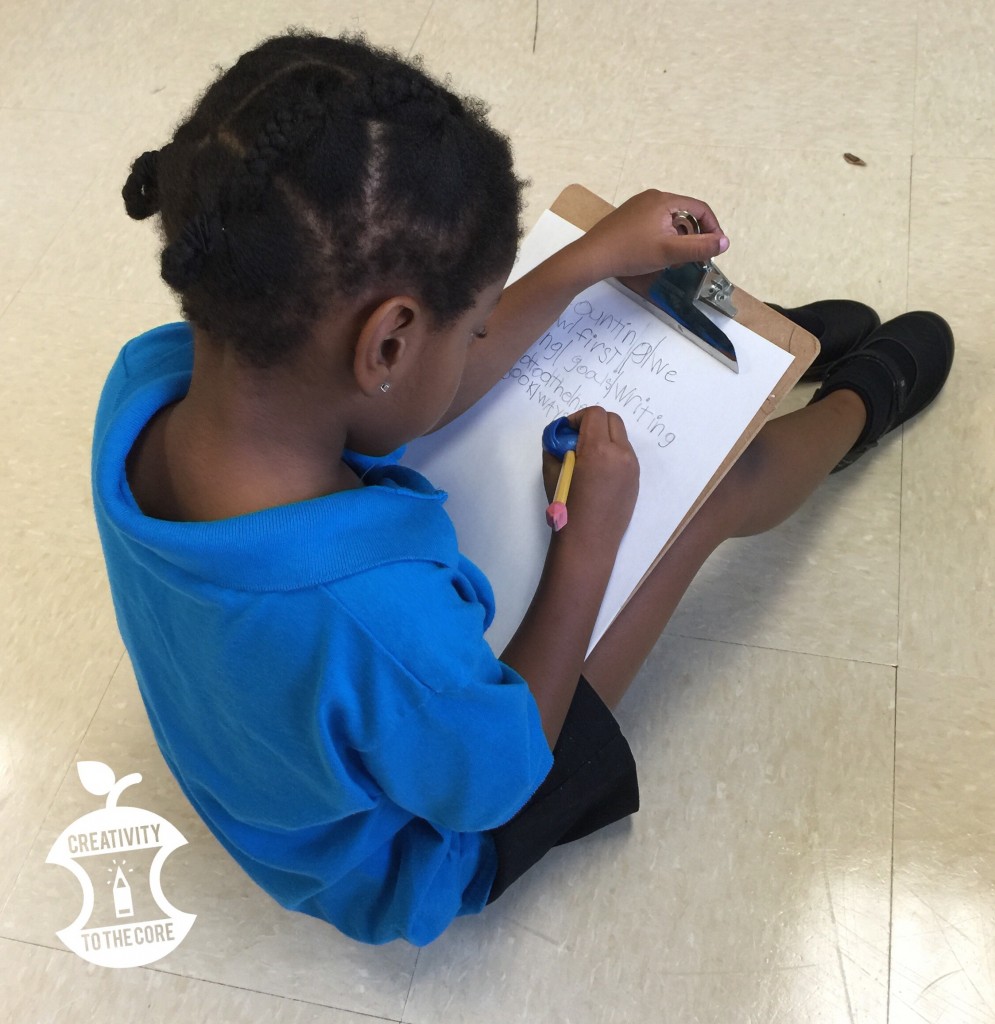
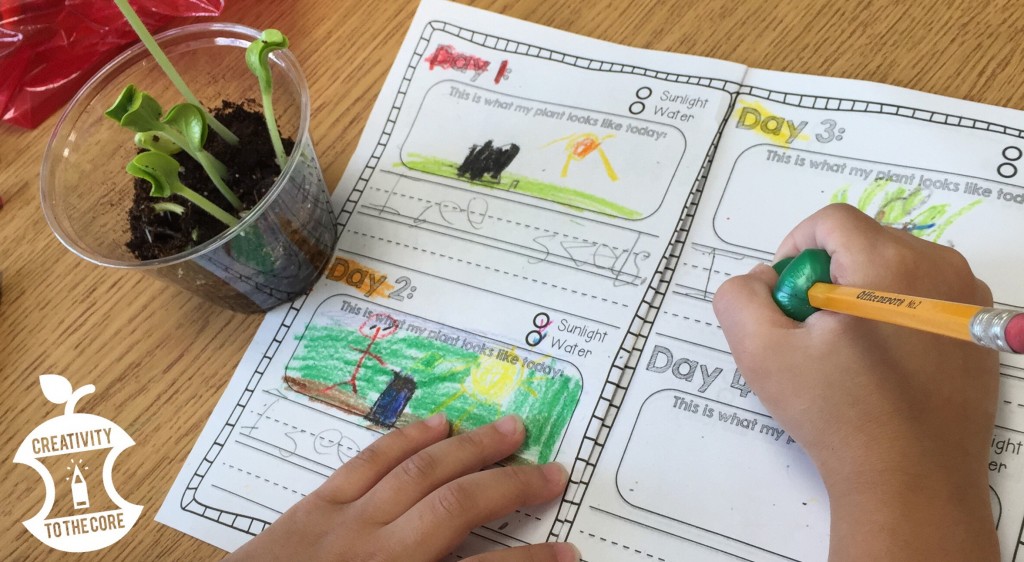


Great blog with ideas I am definitely going to use!